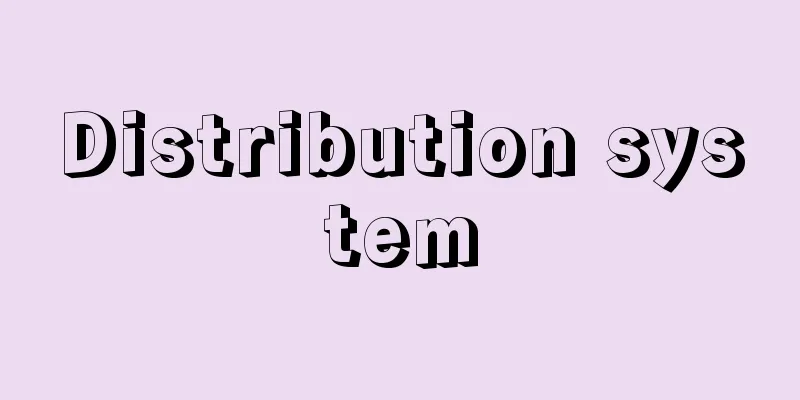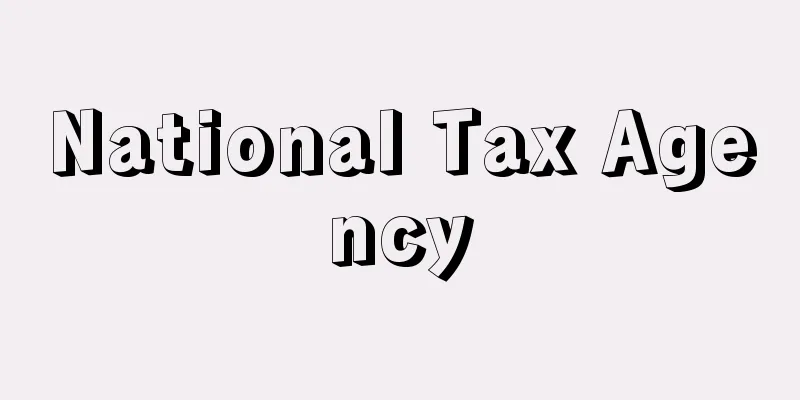Distribution system

|
Distribution refers to the entire social distribution process of products from producers to consumers. This term is said to be an abbreviation of distribution benefit or distribution supply, but since it reminds us of the special state-controlled distribution under the economy during World War II, which will be described later, it is rarely used today and has been replaced by the word distribution. Distribution is broadly divided into primitive non-monetary distribution and institutional monetary distribution. The latter is further divided into direct distribution and indirect distribution depending on whether there is an intermediary, paid distribution and free distribution depending on whether there is compensation, market distribution and planned distribution depending on the economic order, and free distribution and controlled distribution depending on the presence or absence of coercive power. In the case of institutional monetary distribution, the system refers to the system of distribution routes, distribution agencies (wholesalers, wholesalers, retailers, etc.), price formation mechanisms (exchanges, central wholesale markets, etc.), and supply and demand adjustment mechanisms (storage, transportation, etc.) organized according to the products. The so-called rationing system refers to controlled distribution during a wartime economy, and in Japan it refers particularly to the system that was in place from World War II to a period after the war. It is said that this type of rationing system was first implemented in Germany during World War I. In Japan, it began with the Cotton Yarn Rationing Control Regulations of 1938 (Showa 13), which restricted the domestic consumption of cotton yarn, and was followed by the Electricity Adjustment Order of 1939, the sugar and match ticket system of 1940, the rice rationing system of 1941, and the general clothing ticket system of 1942, and most goods, from daily necessities to production materials, became subject to controlled rationing. The most typical method of controlled distribution of consumer goods was to issue tickets according to the number of people in each household in advance, and to hand over goods in exchange for these tickets, which was called the ticket rationing system (distribution by ticket system). The Food Control Law of 1942 was seen as a symbol of controlled rationing, and although it changed form and became a mere formality, it remained in place until the 1981 revision (which shifted to supply and demand adjustment). Controlled rationing was implemented under conditions of absolute shortages of goods, which led to so-called black market trading and gave rise to various irregularities. Furthermore, as the war intensified, the conditions for rationing were often not even met. As the postwar economy recovered, controls were gradually abolished and no longer exist today. [Mitsuo Morimoto] Source: Shogakukan Encyclopedia Nipponica About Encyclopedia Nipponica Information | Legend |
|
配給とは生産者から消費者に達するまでの生産物の社会的流通過程全体をさす。この用語は分配給付あるいは分配供給の略語であるといわれているが、後述する第二次世界大戦時経済下の特殊な国家統制的流通を想起させるため、現在ではほとんど使用されなくなり、流通の語によって代置されてしまっている。配給は、原始的な無貨幣配給と制度的な貨幣的配給に大別される。後者はさらに、仲介者の有無によって直接配給と間接配給とに、対価の有無によって有償配給と無償配給とに、経済秩序によって市場配給と計画配給とに、強制力の有無によって自由配給と統制配給とに分けられる。制度的な貨幣的配給という場合の制度とは、生産物に対応して組織化された配給経路、配給機関(問屋、卸売り、小売りなど)、価格形成機構(取引所、中央卸売市場など)、需給調節機構(貯蔵、運送など)のシステムをいう。 いわゆる配給制度は、戦時経済下に行われた統制配給をいい、日本ではとくに第二次大戦から戦後一時期にかけて行われたそれをいう。この意味の配給制度は、第一次大戦中のドイツで最初に実施されたといわれている。日本では、1938年(昭和13)綿糸配給統制規則によって国内綿糸の消費量が規制されたのに始まり、以後、39年の電力調整令、40年の砂糖・マッチの切符制、41年の米穀配給制、42年の衣料総合切符制と続き、日用品から生産資材に至るほとんどの物資が統制配給の対象となった。消費物資を統制配給する代表的方法は、各世帯に人数に応じた切符をあらかじめ交付しておき、それと引き換えに物資を渡すものであり、これを切符配給制(切符制度による配給)といった。統制配給の象徴ともみなされ、形を変え形骸(けいがい)化しながら81年の改正(需給調整に転換)まで残っていたのが、1942年の食糧管理法(食管法)であった。統制配給は、物資の絶対的不足の条件下で実施されたため、いわゆる闇(やみ)取引を誘発し、さまざまの不正を生み出した。また、戦争の激化により配給条件さえ満たされないことも多かった。戦後経済の復興とともに統制は順次撤廃され、現在では存在しない。 [森本三男] 出典 小学館 日本大百科全書(ニッポニカ)日本大百科全書(ニッポニカ)について 情報 | 凡例 |
<<: Haikyuchū (lung fluke) - Haikyuchū (English spelling) lung fluke
Recommend
Oyano Island
An island located in the mid-west of Kumamoto Pre...
IUPHAR - IUPHAR
International Union of Pharmacology. Founded in 19...
Dollar buying scandal
Foreign exchange speculation in anticipation of J...
Shandong Peninsula - Santouhantou
A peninsula in the eastern part of Shandong Provi...
Cyanamide - Shianamido (English spelling) cyanamide
It is an amide of cyanide, also known as cyanamid...
goldene zwanziger Jahre (English notation) goldenezwanziger Jahre
…Most of today's urban lifestyles have their ...
Practice ammunition - Enshudan
...Depending on the assembly of these components,...
Ise Sadamune
Year of death: October 28, 1509 (December 9, 1509)...
Arthur Rackham
1867‐1939 British illustrator. Born as the third s...
Fan-shaped
〘 noun 〙① Having the shape of an open fan. Also, t...
Kaigenkan
…Buddhist temples were built in each state during...
Tamakavi (English spelling) Sphaeriales
A general term for fungi in the Ascomycetes order....
Nuclear fusion
Nuclear fusion is a nuclear reaction that creates...
capers
Capparis spinosa is a shrub of the Capparaceae fam...
Ilya, A.
… [Military rule to civilian rule] However, the i...



![Tomari [village] - Tomari](/upload/images/67cc5acf49c08.webp)
![Okutsu [Hot Spring] - Okutsu](/upload/images/67cfcd8023991.webp)




![Mie [town] - Mie](/upload/images/67cceef9cab82.webp)